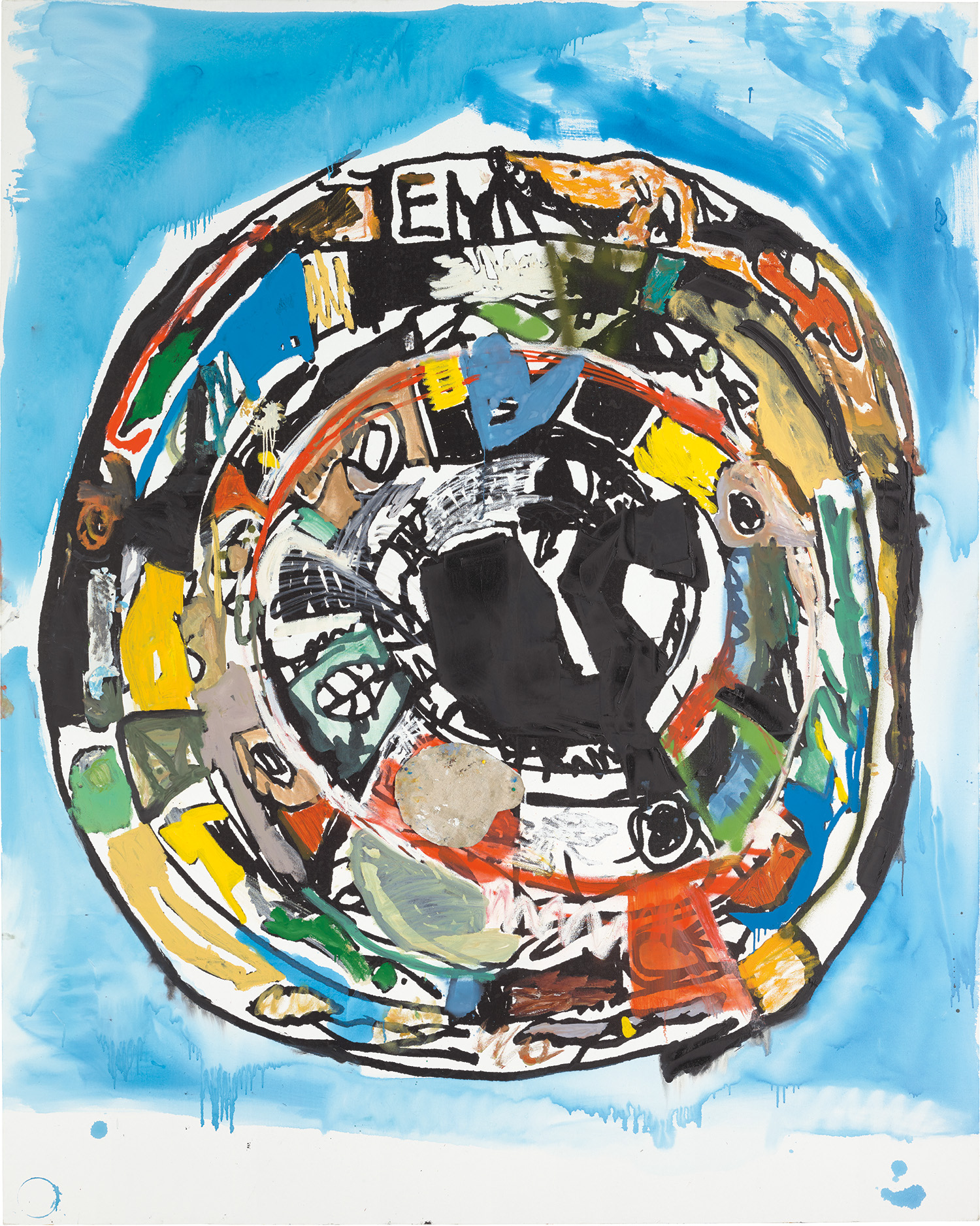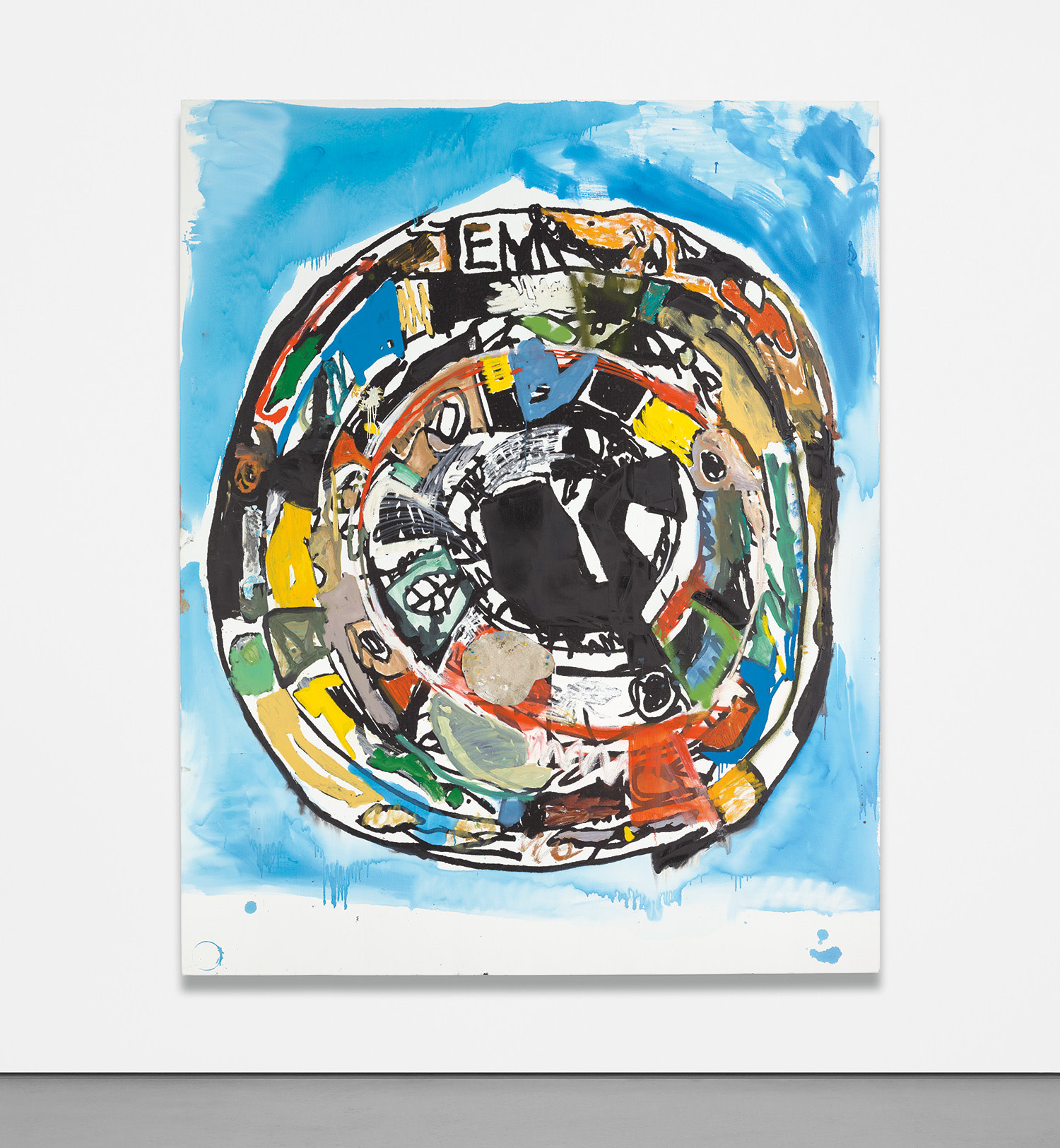



212
Eddie Martinez
Mandala #7 (Frankenthaler Wash)
signed with the artist's initials 'EM' upper centre; signed 'Eddie Martinez' on the reverse
silkscreen ink, oil, spray paint, thumbtacks and collaged canvas on canvas
305.2 x 244 cm (120 1/8 x 96 1/8 in.)
Executed in 2016.